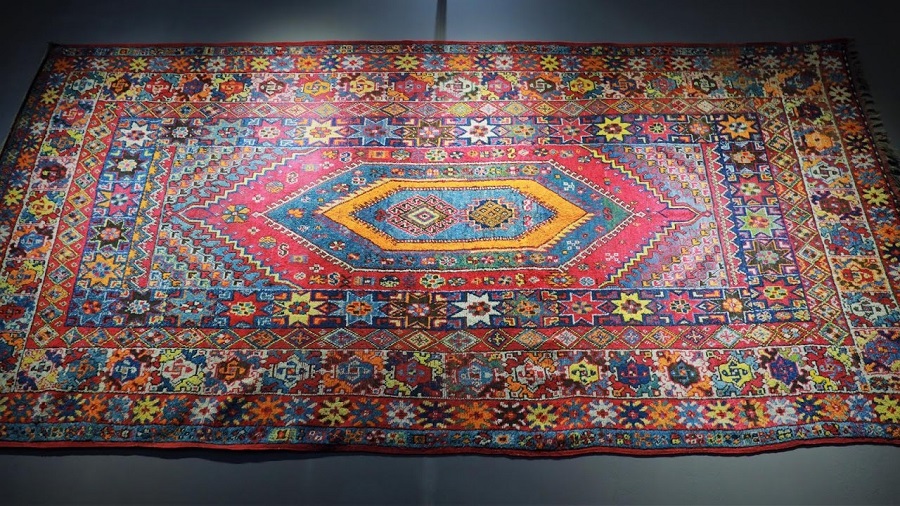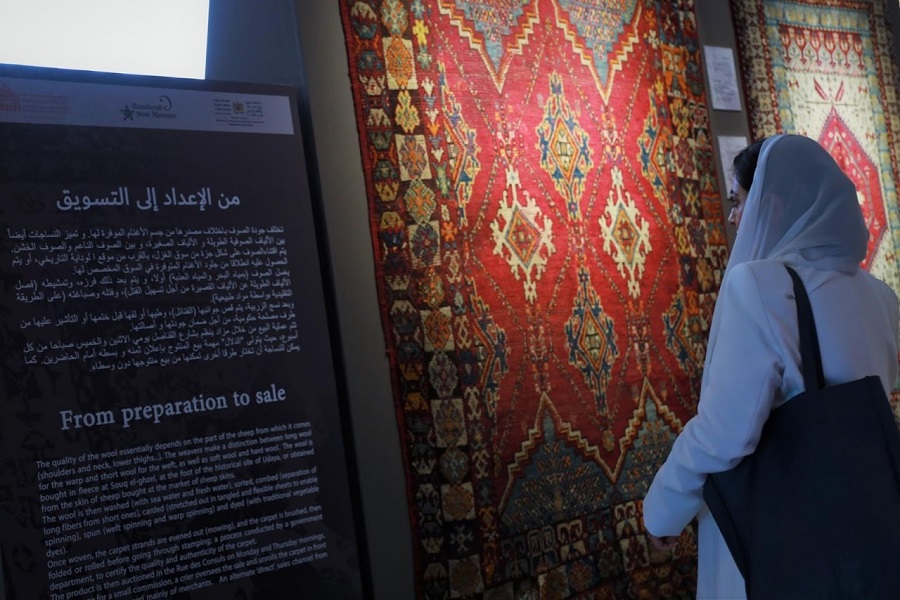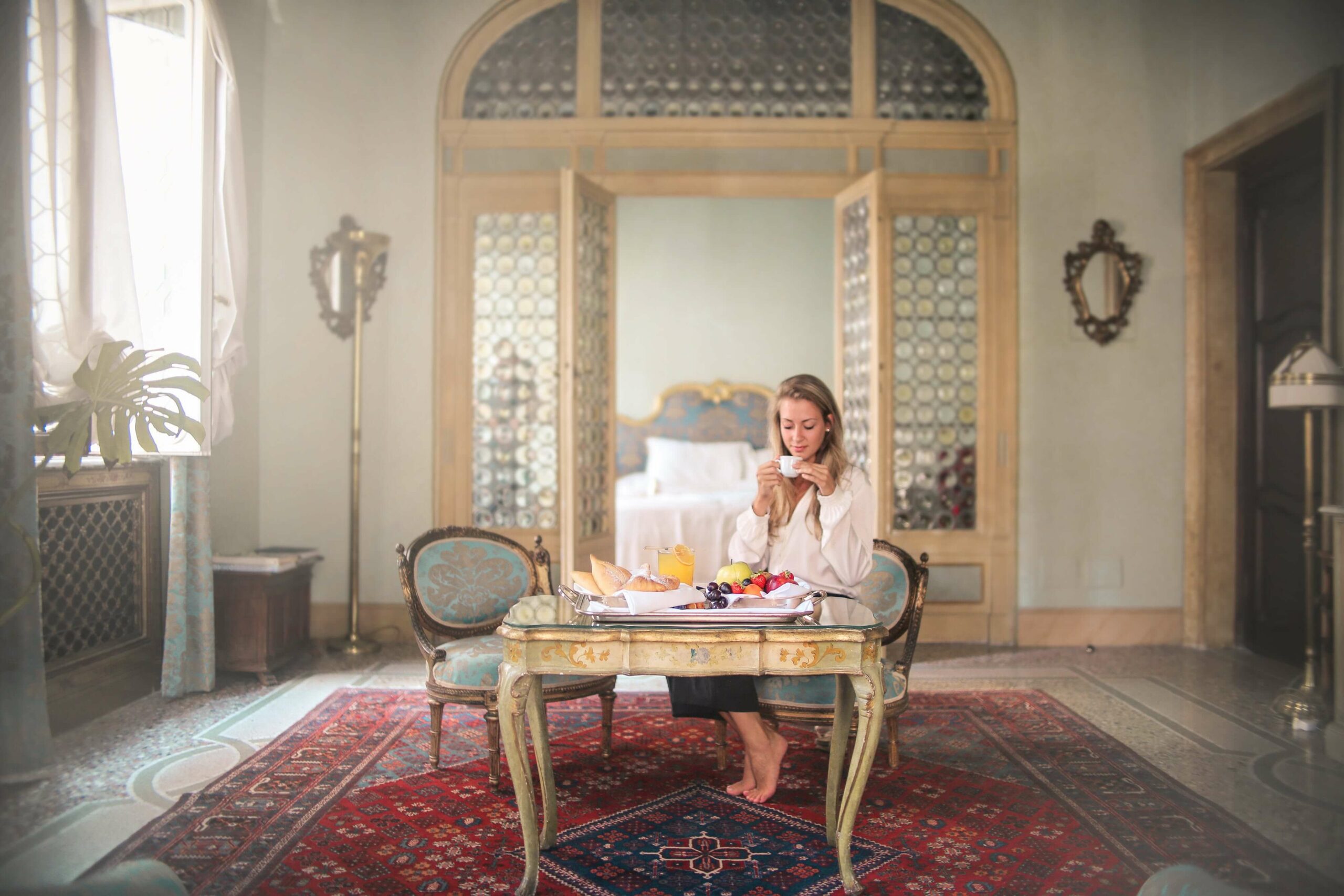Moroccan rugs are a crucial and beautiful traditional craft where Moroccan makers shine. Different rugs are connected to specific areas, displaying important tribal signs.
These signs make the Moroccan rug special and add to its variety and beauty.
So, when you’re shopping in Casablanca, make sure to get yourself a Moroccan rug.
What are Moroccan rugs made of?
Berber women in the Atlas Mountains handcraft Moroccan rugs from high-quality wool, varying them in size, design, and color.
Men go to Mount “Siroa”, a peak in the Anti-Atlas mountain range, and bring sheep or goat wool for crafting Moroccan rugs.
This natural wool fiber is the best, strongest, and finest in the country.
Alongside wool, natural herbs and dyes sourced from nature, such as henna and others, contribute to the Moroccan rug’s natural and authentic charm.
Why Are Moroccan Rugs So Expensive?
Moroccan rugs cost more because they’re handmade from natural stuff, and making them takes time and goes through complicated steps.
Also, crafting these steps may seem complicated, but artisans consider them essential for creating fantastic and colorful carpets that showcase Moroccan identity.
How Long Do Moroccan Rugs Last?
Moroccan Handmade rug lasts for many years, giving you long-lasting quality compared to those that need replacing after just one year.
In other words, skilled artisans make these rugs to last a lifetime, ensuring the color and quality remain unchanged.
How To Clean a Moroccan Rug?
You can clean your Moroccan rug in the washing machine, but it’s crucial to be careful with the techniques to avoid causing damage.
- Dust and Shake Out: take your rug outside and give it a good shake.
- Vacuuming: Use a vacuum cleaner to thoroughly clean both sides of the rug, use a vacuum without a beater bar.
- Spot Cleaning: Sprinkle a bit of baking soda onto the carpet spot to help absorb moisture. Allow it to sit for approximately 20 seconds, then use a vacuum to remove the baking soda.
- Gentle Washing: If the rug needs a deeper cleaning, you can wash it by hand or use a front-loading washing machine with a gentle cycle.
A quick tip: steam cleaning is the most effective way to clean a Moroccan rug.
Are Moroccan Rugs Good Quality?
Moroccan rugs are of excellent quality, crafted from natural materials like wool. They are durable and their colors won’t fade over time, so they’re like a long-term investment.
Skilled hands make them with lots of care, going through many steps to make sure they last and stay beautiful.
Can Moroccan Rugs Get Wet?
Yes, Moroccan rugs can’t get wet. It’s OK! You can wash it because it’s not against water or humidity.
So, place it anywhere you like, and if it gets wet, it won’t produce any bad smells. It will just dry, and you’re good to go.
What Are the Different Types of Moroccan Rugs?
Taznakht Rug

One of the most well-known Moroccan Carpets is the Taznakht rug; It is crafted by weavers in the town of Taznakht.
The rugs from this area reveal great colors and decorations, varied shapes, and a pleasing mix of colors, with red taking the lead.
Also, These rugs are crafted from natural materials, including the use of henna.
Zamouria Rug

The Zamouria carpet, an Amazigh rug, comes from the Khemisset region. The Zamouri carpet is a carpet known more for the strength and durability of its fabric and its longevity.
Particularly, village weavers intricately create numerous geometric shapes, like squares, triangles, pyramids, and circles.
Zayaniyah Rug

The Zayaniyah rug comes from the Middle Atlas region, particularly from the city of Mrirt.
Artisans craft this unique rug by using distinctive red colors and meticulously creating geometric shapes.
Check out more articles:
Basic Moroccan Darija phrases you need to know
